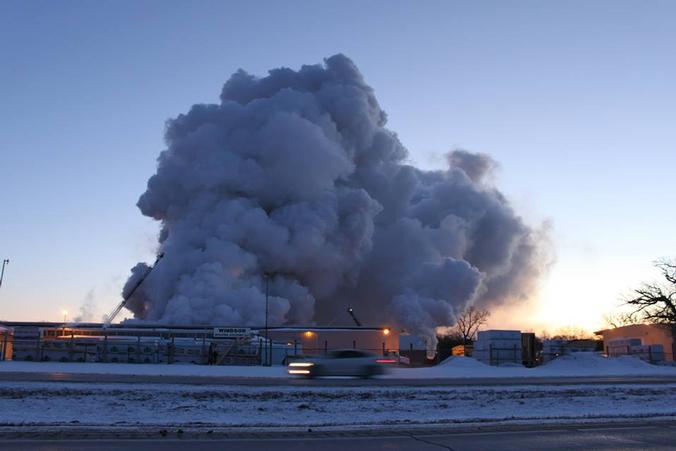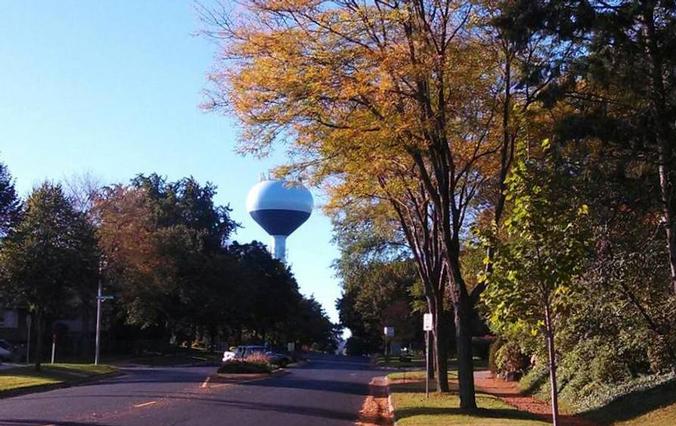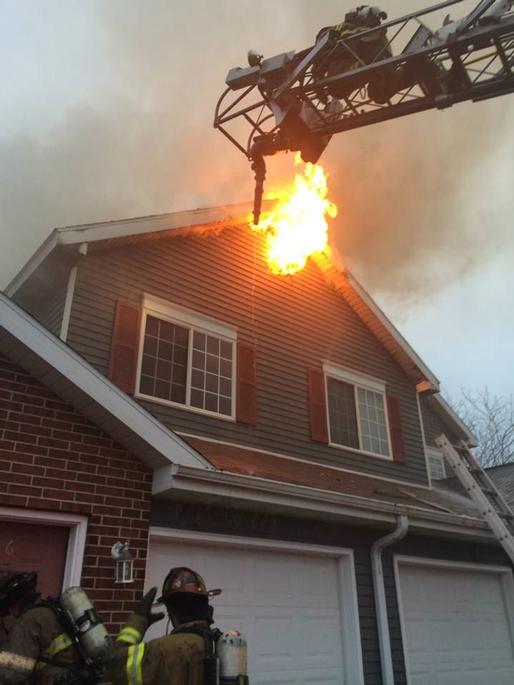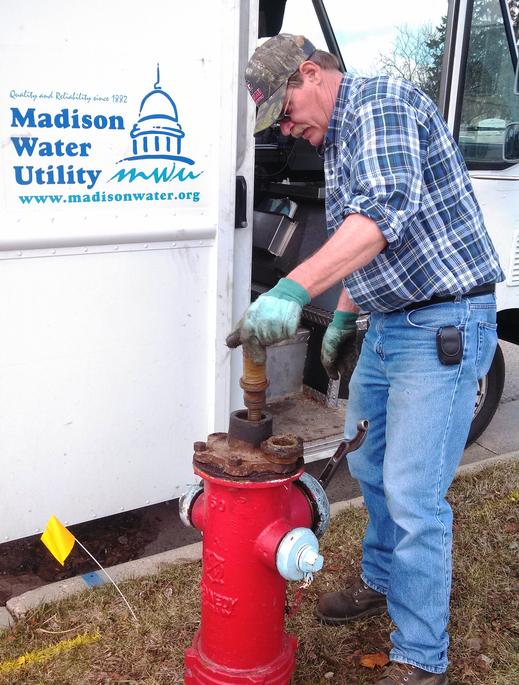When there's a fire: MWU's critical mission
posted

(Fire scene photos courtesy: Madison Fire Dept.)
The call
It was just after dawn on a frigid Tuesday morning in January when Madison Water Utility employee Eric Cooper got a call from the fire department.
"They said, 'We need as much water as possible,'" he recalls.
Fire had broken out at a warehouse at 314 Atlas Ave. on the city's east side, and it was growing. Cooper was on duty in the utility's Supervisory Control and Data Acquisition (SCADA) room, sitting in front a wall of computers that allowed him to monitor and operate every water well and pump in the city. He immediately began bringing wells in the area online.
"I turned on (well number) 11, and I turned on 15. The rest of these wells were already on," Cooper says, pointing to a map that outlines water pressure zones and well locations across Madison.

(Photo: As crews fought Atlas Ave. fire, MWU employees monitored reservoir levels and pressure to make sure there was enough water.)
At the height of the fire, some 65 Madison firefighters were on scene pumping more than 2,000 gallons of water every minute. Cooper says many people never stop to think about how much water it takes to fight a major fire.
"I don't think they grasp the gravity, the volume of water that that gets pumped out of those hydrants," he says.
"It's like thinking about tornadoes or electrical storms – if it's not there, people are not going to think about it," says MWU waterworks operator Joel Guderyon, adding that during a major fire like the one on Atlas Ave., the SCADA room becomes crucial. "We can measure the inflow versus the outflow to see whether we're losing water in our reservoirs or not. Some pump fails and suddenly we're vulnerable."

The "critical element"
Evidence of Madison Water Utility's critical fire protection mission is everywhere, if you know where to look.
"Everything we do in terms of engineering – from the size of the mains we install, the size of the pumps we install, the size of the reservoirs we build – it's all based on fire protection," says longtime MWU engineer Dennis Cawley. "While it's a short-term need, it is the highest-intensity use."
Cawley says that more than any other factor, preparing for a major fire has shaped Madison's water infrastructure. Increasing fire protection plays a role in at least three of the utility's large public works projects scheduled in 2014 – reservoirs on the north and northeast sides will be expanded, and a new well is being built on the city's southeast side.

"You can satisfy the domestic demand with much smaller wells, much smaller reservoirs, much smaller pipes. But to satisfy fire protection, that's the critical element," Cawley says.
But it's not all about wells, pumps and reservoirs. Madison Water Utility also makes sure all of the city's 9,000 fire hydrants are installed correctly, working and ready to use. Utility crews even repaint more than 3,000 hydrants every year so they stay bright red and easy to spot in an emergency.
"They don't get used very often, but you want to make sure that they do work when they're needed," Cawley explains. "There are mechanical parts, and mechanical parts have to be functioning. So we have a regular maintenance program."


The utility also focuses redundancy.
"It means we have backup plan. Any single part of our system can go down and we can have it covered. So it's a balancing act. We have to balance (the rates we charge water customers) with the ability to function. How much capacity is enough? How much redundancy is enough? Is the redundancy worth the extra cost? We have to make a lot of those decisions."
Cawley says all the planning, building and preparation takes a lot of time and money, but it's vital it when disaster strikes.
"Nobody wants to lose their home. Everybody wants to have enough water available to fight a fire. It's something that's out of sight out of mind until you actually experience it."
